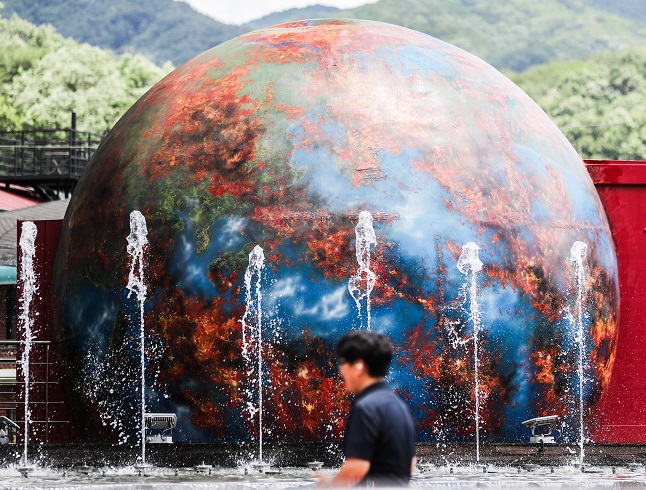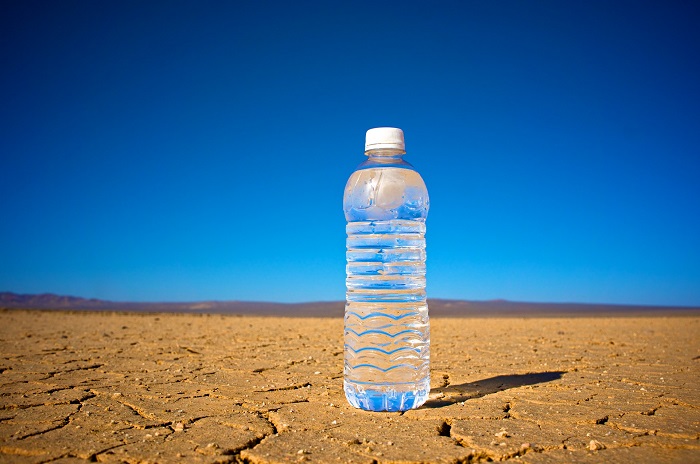SEOUL, July 7 (Korea Bizwire) — Researchers from renowned tech universities in South Korea and the U.S. have developed a harvester that utilizes metallic organisms to collect water from atmospheric moisture.
This innovative solution offers a sustainable approach to secure water resources, particularly in water-scarce environments like deserts.
The joint research team, led by professor Song Woo-chul from the Environmental Engineering Department at Pohang University of Science and Technology (POSTECH) and professor Omar Mwannes Yaghi from the Department of Chemistry at the University of California, Berkeley successfully obtained water from atmospheric moisture using solar energy.
Their groundbreaking findings were published on July 6 in the international journal Nature Water.
Water scarcity is a pressing issue faced by numerous countries worldwide.
According to a report from the United Nations Children’s Fund (UNICEF) released in March, approximately 190 million children in Africa lack access to clean water. Governments across the globe are actively seeking solutions to address this problem.
However, conventional methods such as seawater desalination have limitations. They rely on fossil fuels and can contribute to environmental pollution when concentrated seawater salts are discharged back into the ocean.

A man walks past an installation featuring a burning Earth at a park in Daegu, 237 kilometers southeast of Seoul, on July 5, 2023. (Yonhap)
Harvesting atmospheric moisture is another potential solution, but it becomes impractical in regions with humidity levels below 70 percent due to the substantial energy required to condense water vapor into liquid form.
In their pursuit of a sustainable and environmentally friendly approach, the research team explored various methods that leveraged infinite resources to alleviate water shortages.
Eventually, they discovered Metal-Organic Frameworks (MOFs), which are porous materials composed of metal ions and organic molecules with tiny holes ranging from one to two nanometers (nm) in size.
The large surface area of MOFs enables them to act as adsorbents, effectively collecting moisture from the atmosphere.
The team then developed a harvester that utilizes MOFs to absorb atmospheric moisture during the night and utilizes solar energy to convert it into liquid form during the day.
To validate their concept, the team conducted water harvesting experiments both in the Berkeley area in June and in the Death Valley Desert in August of last year.

The significance of this research lies in the fact that it was conducted not merely in a laboratory setting but in real-world extreme environments. This demonstrates the practicality and feasibility of the technology. (Image courtesy of Public Domain Pictures)
The Death Valley Desert, known for its extreme heat and aridity, experiences temperatures exceeding 57 degrees Celsius during the day, with relative humidity levels below 7 percent.
The results of these experiments demonstrated that the harvester produced up to 285 grams and 210 grams of water per kilogram of MOF per day in the Berkeley area and Death Valley Desert, respectively.
These quantities were more than double the amount achieved by existing harvesting technologies.
Furthermore, the harvester developed by the research team exhibited a remarkable feature: it solely utilized solar energy without relying on any other energy sources or external power supplies.
This was made possible by a proprietary condenser and adsorption system.
The significance of this research lies in the fact that it was conducted not merely in a laboratory setting but in real-world extreme environments. This demonstrates the practicality and feasibility of the technology.
The potential of this technology to tackle the intensifying water shortage problem and associated environmental challenges was emphasized by Prof. Song, who expressed confidence that this sustainable approach could secure water resources regardless of the terrain and climate conditions found anywhere in the world.
Kevin Lee (kevinlee@koreabizwire.com)







